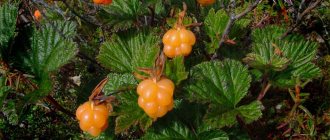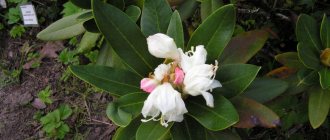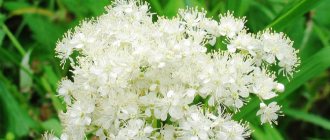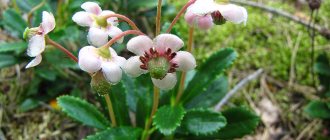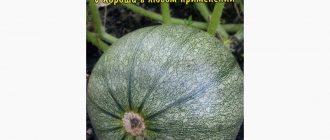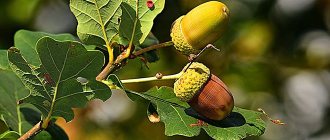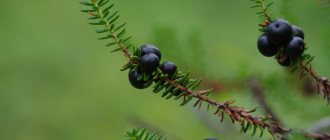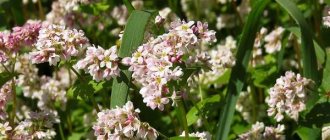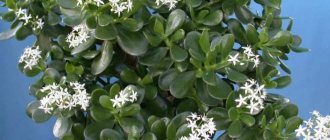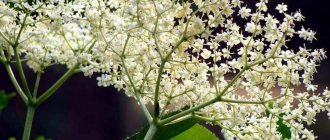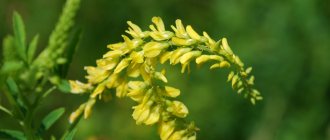There are 71 species of juniper in total. It grows in a number of countries, including Russia. Today we will talk about those types of juniper that grow in the Crimea. He was nicknamed “Crimean”. Few people know that juniper has many beneficial properties. There are also some contraindications.
What is Crimean juniper? The medicinal properties of the tree and its contraindications will be described in this article.
Features of juniper
Juniper grows in deciduous forests that receive good sunlight. Low creeping species prefer rocks and slopes. Plants love the sun.
The large number of juniper species makes it difficult to say exactly how resistant they are to frost. Some species grow well in the harsh Arctic climate. Others can only survive in subtropical conditions.
Common juniper reproduces by seeds. The creeping species reproduces by breeding, and rare medicinal species reproduce by grafting to a species close to them.
The buds of this plant are completely bare. Scales are completely absent. They are surrounded by leaves. The leaves of young plants resemble needles in appearance. When mature, they become scale-like.
Juniper berries have scales that fit tightly together. As a result, a lump forms. They are called cone berries. They ripen the following year after planting.
Those varieties that grow in the Crimea are called Crimean juniper. These relic-type plants are incredibly popular among tourists. Their truly unique medicinal properties have been known for a long time.
Juniper Cossack
Grows in Primorye, Siberia and Europe. Loves the rocks of the Ural Mountains, the Caucasus and Tibet. Very frost-resistant. An adult plant grows up to 1.5 meters. Unpretentious, tolerates lack of moisture well. The number of varieties reaches twenty, but several are particularly popular.
Arcadia
The height of the bush is 0.5 meters. The needles are light shades of green. As it grows, it forms a beautiful carpet.
Glauca
Height – 1 m. It has a cushion-shaped crown of gray color with a blue tint. The black cones with a brown tint are especially beautiful.
Tamariscifolia
The branches of the plant are arranged vertically, forming a dome. The color of the pine needles is very beautiful. It can have a range of colors from light green to bluish shades. It is not fussy, tolerates acidic and alkaline soils, and grows well.
Blue Danube
The crown of an adult plant grows up to 3 meters. The branches at the edges are raised and have a blue color with a gray tint. Tolerates low (-40 degrees Celsius) temperatures well. Juniper takes root well in the garden.
Juniper history
In Spain, lamb was roasted over a fire made from a special mixture of gorse and juniper. As a result, the meat acquired the finest aroma. In France, only those hams that were smoked in juniper smoke were considered the best.
Juniper was also used in folk medicine and sanitation. To remove bad odors from their homes, people fumigated their huts in a special way, using juniper for this. If there was a sick person in the family, the floors were necessarily wiped with the needles of this tree.
To ensure a healthy spirit in the hut, the housewives raked up the ashes with special brooms, all made from the same juniper. At the same time, it was possible to successfully survive mosquitoes and flies.
In Crimea, pieces of juniper wood were placed in chests with things. This made it possible to save fur clothes from moths.
The ancestors were also well aware that juniper could be used to successfully disinfect dishes. Women steamed milk jugs with juniper. As a result, the product retained its freshness for a long time. This tree was also used to clean tubs for mushrooms, cucumbers and cabbage. These techniques have survived to this day.
Medicinal properties of Crimean juniper
The main healing property for which Crimean juniper has been so popular for many years in folk medicine is bactericidal. In ancient times, smoke from the scorched dry branches of this plant was used to fumigate rooms with seriously ill patients, women in labor, or small children. They steamed freshly chopped spruce branches from young shoots in the baths, expelling various ailments from the body.
Crimean juniper tinctures and medicines based on it were used by the ancient Greeks, Romans and Egyptians. Bandages soaked in ointments were applied to open wounds and ulcers, thereby destroying bacteria and accelerating healing and tissue regeneration.
At the present time, the healing properties of the Crimean juniper do not lose popularity, in particular, the use of this plant is useful for:
- making ointments that are used for dressings to clean the wound from pathogenic microorganisms;
- green spaces in sanatoriums, because it is known that phytoncides secreted by the plant have a beneficial effect on the central nervous system: they relieve excessive irritability and excitability, restore sleep, eliminate headaches;
- fumigation with smoke from set fire to dry cones in a room to disinfect the air in it.
In addition, teas from Crimean juniper normalize blood pressure, improve the functioning of the immune system, and have a positive effect on the functioning of the entire gastrointestinal tract.
Attention! In order to get the maximum benefit from this miraculous plant, you must be able to properly prepare medicinal products based on it.
Recipes for decoctions, infusions, tinctures
There are many recipes for medicinal tinctures and other remedies made from Crimean juniper berries, the proper use of which will benefit human health. They are used as an addition to drug therapy or as an alternative treatment for various diseases.
Infusion of cone berries is used to treat gastrointestinal diseases and is also taken to improve appetite. To prepare the medicine, you need to pour 10 g of dried and crushed dry fruits into 200 g of boiling water and strain after completely cooling at room temperature. Drink 100 g before each meal.
Dried fruits can be used to make healing tea
Also, pleurisy or pneumonia is treated with tincture of Crimean juniper. To do this, pour boiling water (400 ml) into a glass of dried cones and leave on low heat for 30 minutes. After this, strain and top up to the previous volume. Take one spoon three times a day until the condition improves.
For severe coughs, it is recommended to inhale with Crimean juniper oil
If you don’t have an inhaler, it will be enough to add a few drops of pine oil to a pan of boiling water. As it evaporates, it will have a beneficial effect on the respiratory tract, relieving inflammation and eliminating cough.
To reduce pain due to rheumatism during bathing, add a concentrated infusion of berries (200 g per 2 liters of water) to a bath of water. Also, sore joints are rubbed with alcohol tincture: infuse 2 tbsp per 100 g of alcohol for 5-7 days. l. fruits Essential oils are used for the same purpose, rubbing them into the skin to relieve pain.
Cone berries can be consumed raw:
- to improve blood counts - start the course with 4 pcs. per day, increasing the dose by one berry per day. Having reached 18 pieces, gradually reduce the number of berries per day, returning to the initial dose;
- as a diuretic - mix berry juice with liquid honey and take 1 tbsp three times a day. l.
You should not take medications from Crimean juniper berries without first consulting with your doctor.
Contraindications and restrictions
Despite the enormous benefits of Crimean juniper, in case of non-compliance with doses or uncontrolled use of drugs based on them, they can cause irreparable harm to health. In addition, there are a number of contraindications when the use of such medications is strictly not recommended:
- acute kidney diseases, such as pyelonephritis or cystitis;
- stomach ulcer, as well as gastritis or colitis;
- pregnancy (can cause uterine contractions and miscarriage) and breastfeeding.
Important! Even in the complete absence of the listed signs, preparations from Crimean juniper can be taken orally for no more than two months in a row.
Junipers of Crimea
The following species grow in Crimea: red, tall, stinking, hemispherical, Cossack.
Tree or tall juniper is a tree with a wide pyramidal or ovoid roof. Its needles are greenish-gray. The ripe fruits are purple-black. The trees are majestic and slender. They are completely different from their northern relatives, which traditionally grow stlanes.
Stinky juniper looks like a tall one. Its cone berries are larger and brown-black in color. The smell of the plant is unpleasant.
Cossack juniper is a creeping plant. Decorative shrub. Its needles are scaly and non-thorny.
Crimean juniper prefers light. They are not afraid of drought and low temperatures. Very unpretentious to the soil. Blooms almost in autumn. Male flowers are yellow spikelets. Women's ones resemble green buds. In their place, cones will then appear.
Chinese juniper
It got its name from its place of growth. Found in Japan, China, Korea and Mongolia. In our area it can grow in middle regions. The plant tolerates frosts well down to -30 degrees. If it gets cold, it requires shelter.
Presented in two types. Tall plants (20-25 meters) and low shrubs. It has a crown with a blue tint. Tall plants of the subspecies Ketelerii, Ames, Spartan are used to cover hedges.
Gooseberry health benefits and harms: beneficial properties for the body and description of the contents of the berry (115 photos + video)
Red currant care and cultivation: varieties, pruning, planting and propagation rules at home (115 photos)
Black elderberry: planting, watering, pruning and propagation. Contraindications, medicinal properties and recipes for feeding elderberry (110 photos)
Trees of medium height are suitable for the design of small areas. Low-growing spreading varieties, reaching a height and width of 2.5 meters in adulthood, have silver-colored needles and will perfectly complement the landscape.
Juniper prickly
Red juniper - red cedar. This tree is 6-8 meters tall. Its branches are spread out. The plant is covered with needles that are very prickly. Its other name is Crimean prickly juniper.
The crown is cone-shaped. The bark is smooth. Its color is light brown. The leaves are dense. They have two distinct white longitudinal stripes. The wood is dense and durable and does not rot. Various crafts are made from it.
Crimean juniper is an excellent ornamental tree for the southern garden. By dry distillation of wood, juniper oil is obtained. It is an excellent remedy against worms and helps with skin diseases. It is also actively used in the manufacture of cosmetics.
Types and varieties of plants
Juniper shrub is a drought-resistant, light-loving and long-lived plant. Over 70 species of this crop have been bred. Various varieties of shrubs can be cultivated both in cool regions and in the middle zone.
The following types of plants are considered the most famous and widely in demand:
- Red cedar. Can be a horizontal shrub or a vertical tree. Capable of reaching 30 meters in height. Mainly cultivated in dry steppe climates. However, it can grow in any soil and under any climatic conditions. The plant is also called the pencil tree due to the shape of the crown and the quality of the wood. A popular plant variety is Gray Owl.
- Juniper horizontal. It is a ground cover plant. Mainly grown to decorate retaining walls and slopes. North America is considered its homeland. Popular plant varieties: blue star, golden flame.
- Cossack juniper. Can be cultivated in any climate, as it is resistant to frost and heat. The bush is poisonous. It contains sabinol, which is a toxic substance that causes bleeding. Popular varieties: variegata, blue danube.
- Chinese juniper. Because the crop is characterized by slow growth, it is often grown in gardens to form bonsai trees. Cultivated in Korea, China and Japan. Popular varieties: arcadia, blaauw.
- Crimean juniper. Prefers to grow in a warm place and can easily withstand drought. Grown exclusively in mountainous areas. It grows very slowly. Juniper berries are red in color. The fruits cannot be eaten because they are inedible.
- Common juniper (see photo). Characterized by excellent frost resistance. Unpretentious to the soil in which it will be grown. The fruits ripen within 2 years. Popular varieties: gold cone, meyer, compressa.
- Rock juniper. The homeland is mountainous regions. Quite hardy, can easily survive severe frosts and sultry heat. Can be grown on alpine hills and rocky gardens. Reaches approximately seven meters in height. Does not like waterlogged and salty soil types. In winter, the branches must be tied up so as not to become deformed. A popular crop variety is blue arrow.
- Juniper medium. It has an open crown shape. Frost resistance is at an average level. The plant must be covered with protective material only in the first season after planting. Popular crop varieties: pfitzeriana compacta, old gold.
- Juniper scaly. Grows in China and the Himalayas. It is undemanding in care, can grow in any type of soil, and can easily withstand both severe frosts and sultry heat. Popular plant varieties: blue carpet, holger.
The benefits of juniper
What benefits does Crimean juniper bring? The medicinal properties and contraindications have been studied for a long time. Now is the time to talk about it. The berries and needles of these trees contain healing essential oils. Their aroma is tart. The detrimental effect of these substances on pathogenic microorganisms is well known. Just imagine: just one hectare of juniper is capable of releasing as much as 30 kg of phytoncides, which are destructive to many bacteria, per day. When phytoncides penetrate the lungs and bronchi, they relieve all existing inflammation. There is no doubt that such forests are beneficial for asthmatics and people suffering from chronic bronchitis.
Juniper forests contribute to effective air purification. When a person inhales the aroma of trees, the functioning of the nervous system is normalized. It is possible to relieve stress-related arousal. The mood improves significantly, the headache goes away, and blood pressure returns to normal. Shortness of breath becomes less, sleep improves, and the immune system is strengthened. If you take a walk through the juniper grove, your appetite will improve significantly. For excellent digestion, you need to drink tea with the berries of this plant. This drink also helps the kidneys work better.
How to grow, care, pests and diseases
- Crimean junipers are most often propagated by cuttings. This can be done at any time of the year, but optimally in the spring. Seedlings are harvested on a cloudy day; in such weather, plants tolerate pruning more easily. It is best to take branches from the top of the plant - vertical shoots are cut off from creeping bushes, those growing upward from pyramidal trees, and any shoots from shrubs. Cut segments 20-25 cm long, clear the lower part of the needles and immediately place them in the ground. You can put it in water, but not longer than 3 hours (if the wood gets wet, the plant will not be able to release roots).
- The soil is poured into seedling boxes 10-12 cm high (with holes in the bottom). First, expanded clay or pebbles are laid out, and then a nutritious mixture of peat and sand in half.
- Plant the seedlings to a depth of 2-3 cm at an angle of 45º, water them with lukewarm water and place them in a warm place (optimally 20-23ºC) with diffused light.
- It is necessary to provide the seedlings with daily irrigation 5 times a day, as well as protection from direct sunlight.
- In 2-3 months the first buds will appear. It is best to grow such seedlings at home (or in a greenhouse) for a year and only then place them in open ground.
- The distance between seedlings when transplanting should be from one and a half to 4 m. The trees are immediately thoroughly watered and mulched.
- In spring, it is recommended to feed the plant with universal fertilizer.
Juniper uses
Juniper berries have been used for a long time. So, in ancient Rome they were added to wine. This drink was an effective diuretic.
Crimean juniper is used in cooking, vodka production and brewing. Everyone knows such an alcoholic drink as gin. This is vodka that is infused with juniper fruits. Thanks to these fruits, the drink acquires a special taste.
Jelly, syrups and jelly are prepared from juniper berries. They are also added to alcoholic tinctures. Juniper is also used in the fish canning industry. Thanks to it, the fish acquires a special aroma and unique taste. The fruits of this tree are also added to dough for gingerbread and pies. They are needed for smell. Cooks use them as a seasoning for game, meat and fish.
Use in cooking
Juniper berries and shoots are used in cooking. Branches of the plant are often placed in the smokehouse to give dishes a special smell. Juniper fruits are widely in demand in cooking due to their aroma, which is somewhat reminiscent of pine needles, as well as the sweet and at the same time tart taste with which they saturate foods. Juniper can be consumed either fresh or as a spice, which is added to alcoholic and non-alcoholic (coffee, tea) drinks, meat and fish dishes.
In the process of preparing dishes, dark berries of the plant are mainly used, and occasionally twigs.
In most cases, the berries are called “hunting spice” because the fruits are added to various marinades, as well as during stewing of meat dishes to improve the taste of large game.
Where else are dried juniper berries added:
- As a spice they are added to jelly, fruit drink, kvass and beer.
- In the meat of cattle and poultry. Experienced chefs advise using dry spice specifically for fatty meats (for example, goose or pork, as well as roast lamb or beef) in order to fully reveal the taste of the dish.
- In pate or terrine (made from meat, vegetables or fish, somewhat reminiscent of a casserole) as a spice.
- While smoking fish. The fruits will not only add wonderful taste and aroma, but will also help increase the shelf life of the smoked product.
- To prepare juniper sugar. The resulting product is the main ingredient of syrup, which is the basis of various confectionery baked goods and desserts (for example, gingerbread or muffins).
- Used in the food industry as a coffee substitute.
- Used for pickling mushrooms.
- They are used to ferment cabbage, improving its taste and aroma.
- Used to create gin, wine, moonshine and vodka.
Interestingly, juniper berries are used to make tea. This medicinal and tasty decoction helps strengthen the immune system.
A seasoning is prepared from the cones of the plant, which has a rich aroma and taste. Widely used in Russian cuisine.
What does juniper spice go with? The spice can be mixed with garlic, mint, onion, marjoram, celery, rosemary and cumin.
It will not be possible to replace the berries with any other product, because juniper fruits emit a pine smell that is not characteristic of other spices. You can purchase spices both at the pharmacy and in special stores that sell spices.
Juniper berries are difficult to grind. In this regard, before use, the fruits will need to be either crushed in a mortar or crushed with a knife. The crushed berries are placed in a gauze bag or infuser container. Approximately 25 minutes before the end of cooking, the spice must be added to a liquid dish or sauce. At the end of the cooking process, the spice must be removed so that there is no bitterness in the finished dish.
As you can see, there are many culinary recipes that use juniper berries, both fresh and dried, to prepare delicious and aromatic products.
Juniper beads
Today beads are made from juniper. Hemispherical or ordinary juniper is used for this. The height of this creeping shrub is 60 cm. The bush looks like a circle of regular shape. Beads are made from it in Crimea.
The aroma of these wonderful wood products is truly fabulous. I immediately remember seascapes, the sound of the Black Sea, the air of the mountains. You are miraculously removed from the big city and its bustle.
Beads from Crimean juniper become the basis for various products. They are used for Christmas tree decorations, rosaries, children's toys, baby slings, car seat mats and hot pads. Traditionally, juniper beads are used for children's rodents. They are made of natural wood, there is no paint or varnish coating.
You can find beads from 7 mm to 26 mm. you can choose your preferred shape - cube, oval, ring, button.
Red cedar
A native of America. It grows up to 30 m, forming a crown up to 1.5 meters. It grows very quickly. The needles are mixed, the fruits are spherical in shape in the form of cones. Blue juniper has been developed and is planted in the southern regions of our country.
Gray Owl
It differs from wild varieties in its small size (1.5 m). There are trees that have needles with a bluish tint. Like all its relatives, it is frost-resistant and loves light. When pruning, you can form any crown and image.
Blue Cloud
The smallest in this family (40cm). Has long branches of blue color with a gray tint
Skin and hair care
Crimean juniper is often used for hair and skin care. The essential oils of this plant have a profound effect on the hair follicles and epidermis (its deep layers). If you steam the branches and roots with boiling water, then this natural hair rinse will be as effective as possible.
It is enough to grind juniper berries with a blender and add it to masks to achieve ideal skin condition. This active component helps nourish the epidermis and also provides an optimal lifting effect. After the first use you will see the result.
Juniper dahurian
One of the long-livers. Can grow up to 100 years. It develops very slowly. The homeland of this plant is Northern China, Mongolia and the Far East. The plant is only 50 cm tall. It strengthens mountain slopes and embankments well. The crown grows up to a meter in adulthood.
The needles are green in color and turn brown during cold periods. Brown ball-shaped cones.
Contraindications
Crimean juniper, the beneficial properties of which were presented to your attention in the article, also has some contraindications. These are pregnancy, acute inflammatory processes in the kidneys, gastritis in the acute phase, duodenal and stomach ulcers. Juniper is also not recommended for those who have problems with blood pressure. Treatment is contraindicated for them and for those suffering from severe hypertension.
Individual intolerance to this plant is possible. It's a common allergy. Reactions to needles and fruits are quite rare. But in no case should you forget about them during the first treatment. If you go to an area where juniper grows, be sure to take antihistamines with you. It is necessary to use juniper fruits or a collection for treatment only after consulting a doctor. He will assess the condition of your body and, if necessary, can prescribe an alternative medicine.
The intake must be correct and necessarily dosed. It will only be beneficial if you follow the recommendations of specialists. Remember, an overdose can lead to poisoning. As a result, there will be more harm than good. Do not self-medicate. Be healthy!
Juniper horizontal
The crown spreads, grows up to 30 cm. It likes to grow on the banks, in the mountains and sandy embankments. The homeland of this unusual plant is Canada. A wide variety of varietal plants (more than 100) have been bred. Although it is considered an unpretentious plant, it loves moist soil.
Andorra Variegata
An adult plant has a size of 40 cm. It has all the positive qualities of the species. Frost-resistant, loves the sun, not picky about the soil. The light green needles have white inclusions. Winter turns the needles into bright purple colors with a violet tint.
Blue Chip
The branches of the plant are raised. They creep along the soil. It has bluish-gray needles, which turn purple in winter.
Limeglow
They have bright yellow needles. It does not tolerate heavy soils well, and in the shade it changes its rich colors.
Blue Forest
Loves the sun. It has small needles of a light silver shade. Young branches grow vertically.
Women
For women's health, veres is used as a means to prevent delayed menstruation. For scanty, inconsistent periods accompanied by pain, juniper-based preparations are used. Therefore, this plant is contraindicated for pregnant women, as it has abortifacient properties and can cause bleeding.
Infusions and decoctions of juniper treat inflammation of the vaginal mucosa - trichomonas colpitis, urethra, bladder. There is evidence that juniper berries increase lactation in nursing mothers, relieve swelling, and help fight insomnia during stress.
For hair loss, increased oiliness, and sagging skin, women are recommended products from this amazing evergreen tree.
Children
The use of juniper for children under 18 years of age is strictly limited. The plant is quite toxic and potent for the body of children and teenagers; it will cause more harm than good. The only place where it is possible to use juniper wood in the children's industry is in the manufacture of toys, rattles, chewers for teeth, and massage rings for gums. The items have a pleasant aroma that gently stimulates the child’s nervous system, soothes, relieves stress, has antibacterial and anti-inflammatory properties, and small wooden elements develop fine motor skills and tactile sensations.
What is juniper
Juniper belongs to the evergreen coniferous plants of the Cypress family. Considered one of the longest-living plants in the world, specimens up to 3,000 years old are still found. People often call it veres.
What does it look like
What does juniper look like?
There are more than 50 varieties of juniper. Each of them has its own structure and characteristics. Juniper is found as a creeping plant, shrub and tall tree. They grow slowly, so plants taller than 10 meters are rare.
The most common are small shrubs and trees up to five meters. Juniper needles, as a rule, are prickly and hard, but there are also soft types, they are modified leaves - scales. The color range of juniper is varied - from light green to blue.
Where does it grow
Juniper has a high level of adaptation to various weather conditions and soil compositions. Thanks to this feature, plants can be found on all continents, even in the Arctic. Large representatives of junipers are found in America, Africa, Europe and eastern countries. Throughout the planet there are dense juniper forests consisting of mature massive trees. Shrubs and horizontal junipers are most common in mountainous areas, but are found everywhere.
Health benefits and harms for women and men
Juniper-based products benefit both the male and female body. Due to the fact that the plant contains flavonoids, organic acids, pectin, tannins and resins, it is used for diseases of the pelvic organs.
- It is useful for women to take decoctions based on juniper fruits for the purpose of:
- eliminating delays in the menstrual cycle;
- increasing blood flow to the pelvic organs;
- elimination of menopause symptoms (hot flashes, irritability, insomnia);
- eliminating candidiasis.
Blue Juniper
Many trees and shrubs of this species have bluish needles, which is why they are sometimes called blue junipers. To effectively grow these plants, a number of conditions must be met.
Blue juniper grows vigorously in well-lit areas, but does not tolerate prolonged exposure to direct sunlight.
Trees with bluish needles are quite frost-resistant and prefer fertile, well-drained soil. When replanting plants, it follows that the root system of blue juniper is highly intertwined, so care must be taken to avoid damaging the small roots. This species does not tolerate dry air well and requires regular spraying of the crown and moistening the soil. Dry branches should be trimmed with pruning shears.
Forest juniper
Common juniper (Juniperus communis) is often called forest juniper. This dioecious (less often monoecious) plant is found mainly in Europe, Asia, North America - countries of the Northern Hemisphere with a temperate climate. This species is also common in North Africa, Pakistan and Nepal. On the territory of Russia, forest juniper grows in Western Siberia (sometimes found in Eastern Siberia). It grows mainly on dry hills, limestone, along river banks and in pine forest undergrowth, as well as in deciduous and mixed forests. Quite rarely, this type of juniper, photos of which are presented on this page, settles in swamps. Prefers sandy soils; excess moisture is contraindicated for these plants.
Forest juniper, the average size of which reaches 3 m in height, has an ovoid or cone-shaped crown. In males the crown is narrow, in females it is wide and spread out. The bark is grayish-brown or dark gray, flaky. The shoots mainly have a red-brown tint. The triangular, pointed leaves are arranged in a ring shape, reaching 1-1.5 cm in length, with a whitish strip running through the middle of the leaf. The male cones of Juniperus communis are yellowish in color and almost sessile. Female cones are pale green and become black and blue with a blue tinge when ripe. Cone berries ripen in the second or third year and have 1-2 conical, yellow-brown seeds.
Juniper creeping
Creeping juniper, a small form widespread in Ireland, is often used in ornamental plantings. These low-growing plants reach up to 50 cm in height, the diameter of the crown does not exceed 2 m. The needles of creeping juniper are very thick and prickly. The needles are usually light green, with silvery-white stripes.
Creeping juniper prefers light, well-drained soils and can grow on rocky surfaces. Quite drought-resistant, frost-resistant, light-loving, and tolerates light shading. These plants should be planted in open areas, 3 bushes per 1 m2. The needles of creeping species do not tolerate air pollution and dust, so it is necessary to resort to systematic spraying.
How to choose juniper seedlings when purchasing?
Juniper seedlings
Junipers are not a species that can easily be transplanted. The larger and older the seedling, the more difficult it is for it to take root in a new place. Seedlings no older than 3–4 years old with a closed root system and rooted in the substrate take root better. You should not buy specimens with bare roots - the chances that they will survive are minimal.
To make a purchase, you should go to a large garden center with a proven reputation. The optimal time for purchase is early spring or cool autumn (September-October). dwarf and two-color hybrid varieties and plant them in the spring.
When choosing, you need to make sure that the color of the needles and the general habit of the seedling fully correspond to the declared variety or hybrid. You should not choose specimens with brown needles, partially bare branches, dried out tops, without young growth, or affected by pests and diseases. When inspecting the seedling, you can look under the bottom of the container - if large pieces of roots come out through the holes, it is better to refuse the purchase.
If you plan to plant large trees, it is better to entrust this task to garden center specialists, provided they provide guarantees of plant survival. You should not take risks and plant adult junipers yourself.
Rock juniper
One of the rare species is rock juniper (Juniperus scopulorum). This is a dioecious shrub or tree of medium size, reaching 5 m in height with a trunk diameter of up to 1 m. The irregularly spherical crown begins almost from the very base, tetrahedral young shoots have a bluish-green color. The leaves of rock juniper are ovate-rhombic, scale-like, with a blunt tip. Dark blue, with a bluish coating, the cones reach 4-6 mm in diameter and ripen at the end of the second year. Inside the cone berries are two reddish-brown, ribbed seeds.
Juniperus scopulorum should be planted in light, wind-protected areas. The annual growth is up to 12 cm. In the shade, the crown of rock juniper becomes bare, and the tree loses its decorative qualities. The cold resistance of this species is low; in snowy winters, tree branches can break off. This species grows especially well in areas where annual precipitation is 150-200 mm. It has cultivars with a pyramidal crown and blue needles.

